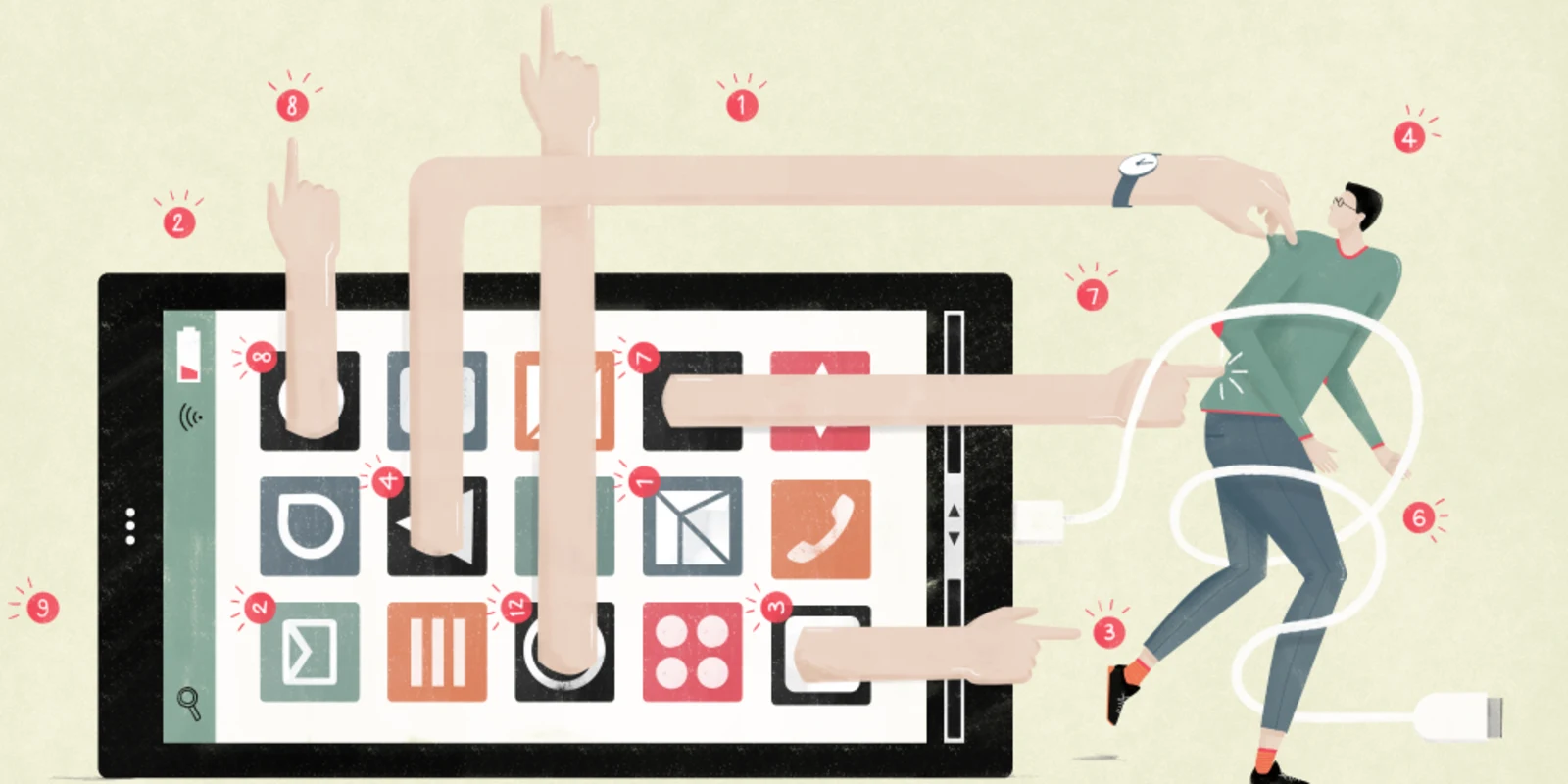
In discussions about practicing psychiatry, clinicians often refer to the “third person in the room.” Usually, we’re referring to someone who’s played a pivotal role in shaping the client’s psyche; a parent, a significant other, or in darker moments, an abuser. Then, we look for evidence of this presence shading his or her personal narrative.
Managing the presence of that third person is what psychiatric providers sign up for—it’s part of our training. Increasingly, though, there’s a fourth person lurking nearby, one whose presence is equally potent. But this person isn’t a person at all—it has no thoughts or emotions, but it’s as deft at manipulating thoughts and feelings as any living, breathing human, including providers.
It’s technology, of course. It can occupy the space as a helpful invited guest, a virtual Martha Stewart, who helps with clean-up and makes everyone’s lives easier. Or, it’s a virtual Bluto from "Animal House", smearing the furniture with greasy hands and disrupting every thought and observation. It could be a Yelp review, a pharmaceutical advertisement, factsheets from WebMD, or a blog post. It could also be the irritating and incessant jingle of cell phone texts and emails. Whatever the form, it is omnipresent. On a good day, it’s fodder for a constructive conversation about treatment—dispelling sloppy science, reinforcing positive sources of information. At other times, it feels like an impermeable barrier of urban myth and scientific hyperbole.
It’s made me stop and think about the word “interface.” Contextually, it’s rarely used outside of conversations about technology. Merriam-Webster lists it as both a noun and a verb. As a noun, it’s described as “the place at which independent and often unrelated systems meet and act on or communicate with each other.” Not surprisingly, most of the usage examples were about software. However, as its first recorded use is dated between 1874 and 1882, something tells me that its origin story did not include motherboards, and the lexicographer in question was not picturing a lone human being illuminated by the light of ten thousand pixels, clicking idly away at random links, pausing only to take a bite of a half-nuked Hot Pocket.
When I contemplate the so-called fourth person in the psychiatry session, this word, “interface,” embodies every positive and negative possibility. In an ideal world, the interface between psychiatric clinician and client would facilitate a partnership, a fluid and organic exchange of information, education, wants, desires, and needs. The clinician would recognize the power of diagnostic terms and the presence of health within illness. The client would share his or her hopes, fears, expectations, and questions. Technology would serve as a tool for connection, reliable information, and ultimately, to make everyone’s life easier.
In an alternate world—one ruled by insurance tables, tax returns, and the fear of a bad Yelp review, the interface is truly about the presence of technology and the absence of communication. The client walks into the room armed with a homemade treatment plan spackled together from Web sources both reliable and unreliable. For some, it’s about being a good client, being “helpful,” but it’s more about filling a void that screams for approval than it is about actual treatment. For others, it’s a battle cry against the perceived paternalism of Big Medicine. Technology has leveled the playing field, and the client perceives she has access to the same information as the clinician. Hence, said clinician is on her payroll and will provide the service desired in a timely manner, just like Amazon Prime. Or, the client wants to know why sessions must be conducted in person rather than via text, email, or Skype—even though she lives two miles from the clinician’s office. That’s not to say that technology does not play a useful role in practice—we all save enormous amounts of time sending electronic prescriptions rather than writing them out by hand, and telepsychiatry provides care to thousands of clients who would otherwise go without treatment. However, when distance is not a barrier, one still has to have an in-person discussion with the client about the physical and emotional implications of taking the medications; there is no electronic equivalent.
A goal of psychiatry is to engage wholly with one’s feelings and emotions. For some, these goals can be attained through the psychotherapy interface. For this to happen, the clinician needs to slow down, be mindful of paternalism, read nonverbal cues, and cast aside jargon and judgment—to be fully available to the person in the room. The client has a job to do too—show up, put down the cell phone, and listen to the clinician’s impression without a packaged, researched response. For psychiatry to be successful, both provider and client must be willing to experience vulnerability with another human being. These compromises require adjustments, but they are simple, reasonable, and completely analog.
Isadora Fox is a psychiatric nurse practitioner who manages medications and engages in psychotherapy in Austin, Texas. She is also doctoral student at the University of Texas at Austin School of Nursing.







